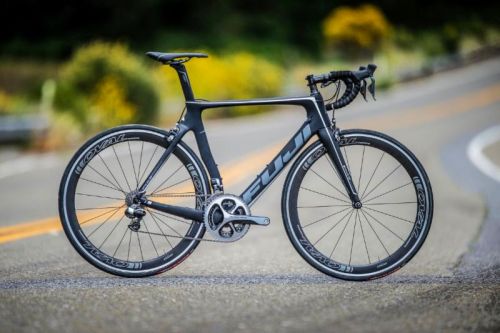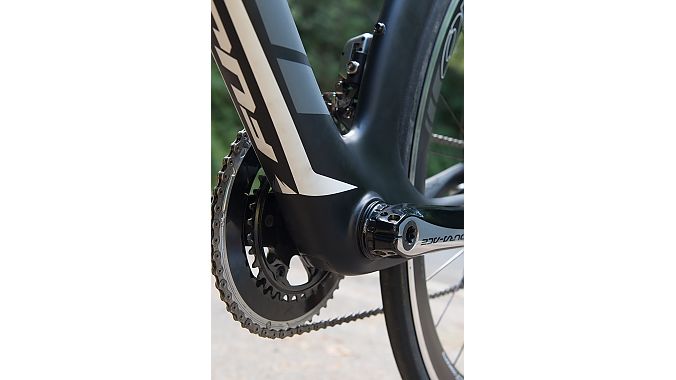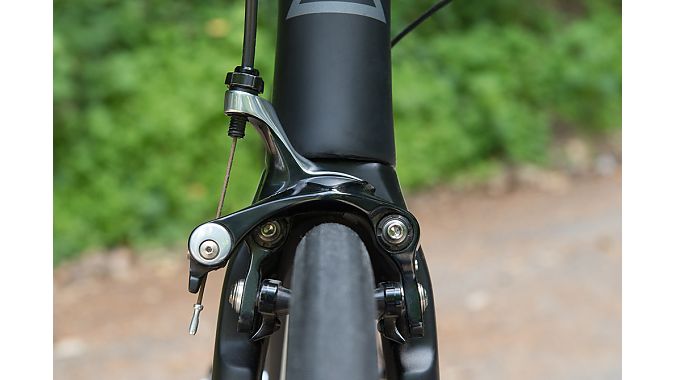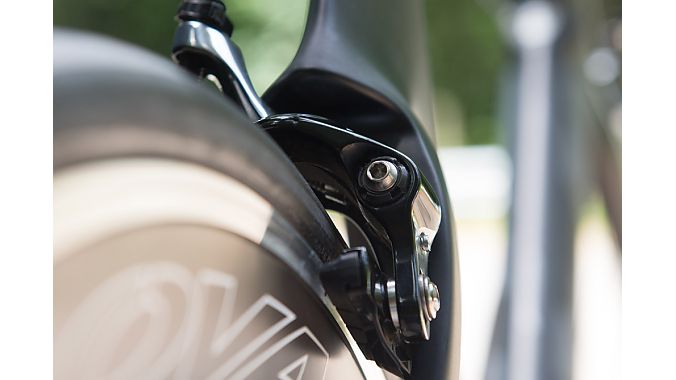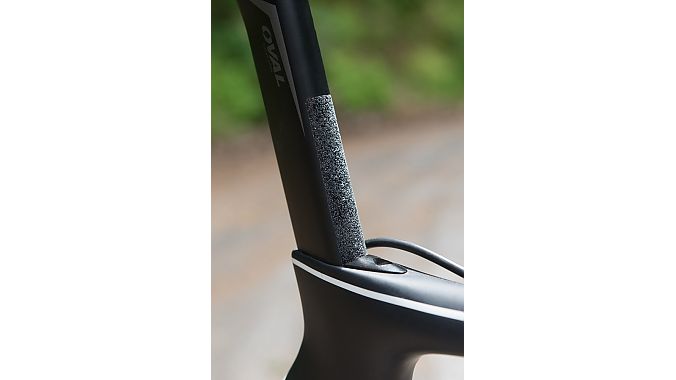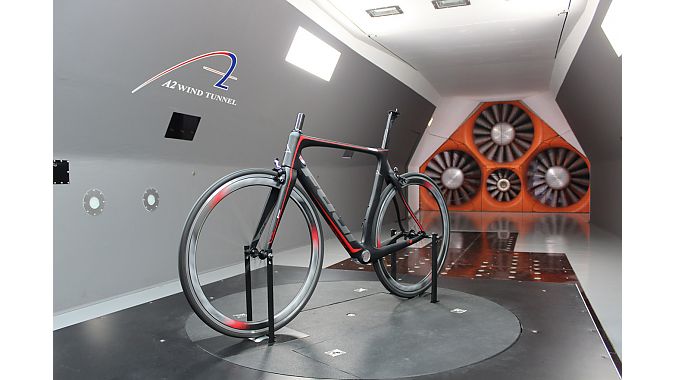PHILADELPHIA (BRAIN) — Fuji released its new aero road bike at a press event in England prior to the start of the Tour de France, where it is being raced in some stages by the NetApp-Endura team.
The Transonic was developed based on work at North Carolina's A2 Wind Tunnel. Over the last few years, work at the facility led to Fuji's Track Elite frame and its Tri/TT Norcom Straight; and now, the Transonic.
The Transonic features an aerodynamically contoured head tube-fork-downtube junction, seatstays that are sculpted around the rear brake to shield it from the wind, and an aero seatpost with an integrated seat clamp. The frame has fully internal cable routing including an internal Di2 battery and direct-mount front and rear brakes.
"We first released our SST in 2009, designed with the input of sprinter Ivan Dominguez and aimed at creating an extraordinarily stiff platform that would thrive in crits and bunch sprints. We next introduced our Altamira in 2011, a collaboration with the climbers of Fuji-Servetto. Ultra-lightweight and designed to excel on steep gradients, it's since won a grand tour title and plenty of queen stage summit finishes," said Fuji's senior road product manager Steve Fairchild. "So with the Transonic, we partnered with our pro team NetApp-Endura and sought out a new focus: speed — a bike with superior aerodynamics that would shine especially on flat or rolling terrain."
Fuji claims that A2 Wind Tunnel tests show a 121 gram reduction in drag averaged across yaw angles from 0-20 degrees compared to the SST and a 118 gram reduction in drag compared to the Altamira. A rider on the Transonic producing a steady 300 watts on a 40km course would be 65 seconds faster than the SST and 55 seconds faster than the Altamira.
To be mechanic-friendly, the bike has a direct-mount brake mounted on the seatstays instead of under the chainstay.
"It's extremely challenging to set up and maneuver around the crankset when the brake's mounted under the chainstay, and it's impossible for a mechanic to adjust in a race situation hanging out of the car. The rider would have to stop," said Fairchild. "So from a stiffness and aerodynamics standpoint, mounting the rear brake makes a lot of sense; but from a service standpoint, it's illogical. We realized that during the design process, so we worked directly with Shimano to modify their front brake design and apply it to a rear seatstay position."
The Transonic will be available globally in the fourth quarter of this year. The frame will be available in eight bike models in seven sizes, from 46-61 cm.

